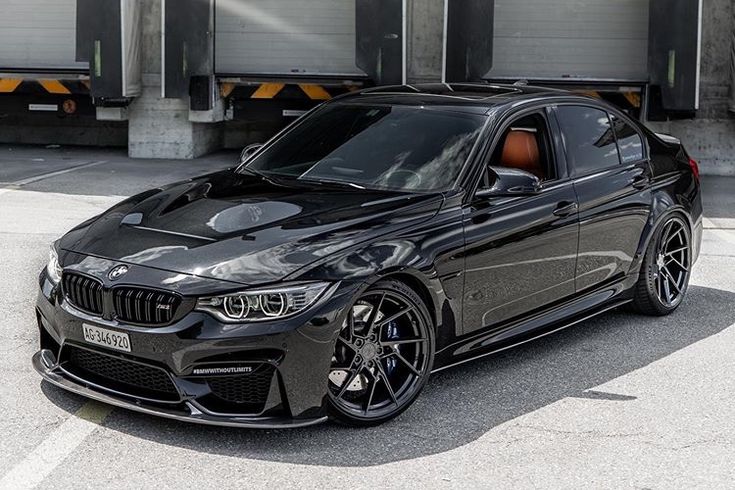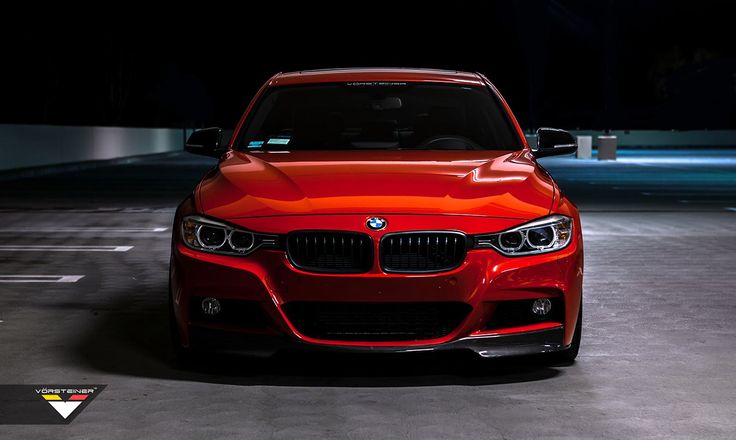The BMW F30 is the sixth generation of the BMW 3 Series sedan, produced from 2011 to 2019. It succeeded the E90 and was followed by the G20 in 2019. The F30 brought significant improvements in terms of design, technology, and performance. Below is a comprehensive look at everything you need to know about the BMW F30.
1. Overview of the BMW F30
The F30 is the sedan version of the BMW 3 Series in the F30/F31/F32/F33/F34 generation, with other body styles including Touring (wagon), Coupe, Convertible, and Gran Turismo (GT). The F30 generation is known for sporty driving dynamics, premium features, and a more refined design compared to its predecessor, the E90.
The F30 was a major step forward for BMW, combining the brand’s tradition of sporty driving with modern technology, luxury and fuel efficiency. The car came with improved handling, advanced infotainment systems, and the latest engine technology.
2. Engine Options
The F30 offered a wide range of engine options, from efficient four-cylinder engines to powerful six-cylinder engines. Below is an overview of the available engines across various models:
Inline-4 Engines:
- BMW 320i: 2.0L turbocharged, 180 hp, 200 lb-ft of torque
- BMW 328i: 2.0L turbocharged, 240 hp, 255 lb-ft of torque (one of the most popular models)
- BMW 330i: 2.0L turbocharged, 248 hp, 258 lb-ft of torque
- BMW 320d: 2.0L turbocharged diesel, 181 hp, 280 lb-ft of torque (available in some markets)
Inline-6 Engines:
- BMW 335i: 3.0L turbocharged inline-6, 300 hp, 300 lb-ft of torque
- BMW 340i: 3.0L turbocharged inline-6, 320 hp, 330 lb-ft of torque (introduced as an update to the 335i)
Hybrid and Plug-In Hybrid:
- BMW 330e: 2.0L turbocharged inline-4 paired with an electric motor, delivering a combined output of 248 hp and 310 lb-ft of torque. The 330e is a plug-in hybrid, providing excellent fuel efficiency and electric-only driving range.
Performance Models (M Performance):
- BMW M3 (F80): A high-performance version of the 3 Series sedan.
- Engine: 3.0L turbocharged inline-6, 425 hp, 406 lb-ft of torque
- Transmission: 6-speed manual or 7-speed dual-clutch automatic
- Performance: 0-60 mph in 3.8 seconds
- Top Speed: Electronically limited to 155 mph
- The M3 model is designed for enthusiasts seeking high-performance and track-worthy capabilities, combining BMW’s racing heritage with luxury sedan comfort.
3. Performance and Handling

The F30 3 Series continues BMW’s focus on delivering sporty handling, but with a more refined and comfortable ride than its predecessor, the E90. Here are the key aspects of its performance:
- Rear-wheel drive: Like most BMW sedans, the F30 features rear-wheel drive (RWD), delivering a more balanced and engaging driving experience. The rear-wheel-drive setup provides a connected feeling with the road, which is one of the hallmarks of BMW’s driving experience.
- xDrive (All-Wheel Drive): The F30 was also available with BMW’s xDrive all-wheel-drive system. The xDrive system provides better traction and stability, especially in wet or snowy conditions, while still maintaining the performance characteristics expected from a BMW.
- Adaptive Suspension: Higher-end trims of the F30 (especially the 340i and M Sport models) were equipped with adaptive suspension that adjusted to road conditions and driving styles, allowing for a more comfortable or sportier ride as needed.
- M Sport Package: Many F30 models were available with the M Sport Package, which included sportier suspension tuning, more aggressive styling elements, and larger wheels. It also offered an upgraded steering system for enhanced handling.
- Sportier Steering: The F30 featured a variable ratio steering system that provided more direct and engaging handling, especially when driving at high speeds or through tight corners.
4. Design and Features
The BMW F30’s design was a step forward in terms of both luxury and sportiness, making the 3 Series more modern and aggressive while maintaining the recognizable BMW DNA.
- Exterior Design: The F30 has a more muscular stance compared to its predecessor, with a wider, lower profile. The front end features a sharper, more aggressive look, including a larger kidney grille and angular headlights with LED technology. The rear of the car has more pronounced fenders and a sleek, modern bumper design.
- Interior Design: The interior of the F30 was upgraded with premium materials and a driver-focused layout. It offers a luxurious feel with materials like leather upholstery, wood, and metal trim. The interior features clean, modern lines, and a more spacious feel, especially for rear-seat passengers.
- Infotainment: The F30 was available with BMW’s iDrive 4.2 or iDrive 6.0 system, depending on the model and year. This system controlled various functions such as navigation, audio, phone connectivity, and vehicle settings. The iDrive system was operated via a central rotary controller or a touchscreen, making it easy to use.
- Display and Digital Features: The F30 offered a digital dashboard with TFT screens for the instrument cluster on higher trims. This allowed the driver to customize the display to show different driving information and assist with navigation.
- Driving Assistance: The F30 was available with several advanced driver assistance systems, including:
- Active Cruise Control (with Stop & Go functionality)
- Blind Spot Detection
- Lane Departure Warning
- Parking Sensors and 360-degree cameras
- Forward Collision Warning with Automatic Emergency Braking
5. Interior and Comfort

- Seating and Comfort: The F30 offered comfortable and supportive seats, with power-adjustable front seats and optional heated and ventilated seating. The rear seats offered ample legroom, making it a more comfortable vehicle for passengers compared to earlier 3 Series models.
- Cabin Features: The cabin is designed for a luxurious feel, with quality leather upholstery, premium audio systems (Harman Kardon on higher trims), and advanced climate control systems. The ambient lighting adds a touch of sophistication.
- Technology: The F30 offered the latest in infotainment and connectivity. Options like Apple CarPlay (introduced later in the production run), Android Auto, and Bluetooth were available, along with advanced navigation systems, real-time traffic data, and multimedia options.
- Trunk Space: The trunk offers good cargo space for a compact sedan, with additional room available by folding down the rear seats.
6. Technology and Safety
The F30 3 Series was equipped with cutting-edge technology and safety features that were designed to improve convenience and protect the driver and passengers.
- Driver Assistance Features: As mentioned, the F30 offers many driver assistance features, such as blind-spot monitoring, adaptive cruise control, lane departure warning, and automatic parking assist. These features were available on higher trims or as part of technology packages.
- BMW ConnectedDrive: The F30 included BMW’s ConnectedDrive, offering remote services, real-time traffic updates, and cloud-based apps to improve convenience and connectivity.
- Active Safety: The F30 offered the latest in active safety technology, such as collision avoidance, pedestrian detection, and dynamic stability control (DSC).
- Airbags: The F30 comes with dual front airbags, side-impact airbags, and curtain-style airbags for both front and rear passengers. These are standard safety features for enhanced protection.
7. Reliability and Maintenance
The F30 is generally regarded as a reliable car, but, like any vehicle, it requires regular maintenance to ensure longevity. Some common issues reported by owners include:
- Timing Chain Issues (N20/N26 Engines): Some early models with the N20 or N26 engines (4-cylinder turbo) had issues with the timing chain or timing chain tensioner. This issue could lead to engine damage if not addressed.
- Water Pump Failures: The water pump may fail prematurely, especially in higher-mileage cars, leading to engine overheating and potential damage.
- Electronic Issues: Some owners report electrical gremlins, such as infotainment system freezes, issues with the key fob, or problems with the central locking system.
- Brake Wear: The F30’s brake pads and rotors may wear out more quickly than expected, particularly if the car is driven aggressively.
- Turbocharger Issues (N55 Engine): The N55 turbocharged inline-6 engine is generally reliable, but some owners have reported issues with oil leaks or turbocharger failure in high-mileage cars.
8. Pricing and Collectability
The F30 3 Series has become widely available in the used car market and is generally affordable compared to newer models. Prices for a used F30 depend on the model, mileage, and condition:
- BMW 320i/328i: Prices range from $10,000 to $20,000 depending on the model year and condition.
- BMW 330i: The price range for the 330i is between $15,000 to $30,000.
- BMW 340i: Prices range from $18,000 to $35,000, depending on the model year and mileage.
- BMW M3 (F80): Prices for the M3 F80 vary widely depending on mileage and condition, typically ranging from $25,000 to $45,000.
9. Legacy and Impact
The F30 3 Series built upon the strong reputation of the 3 Series by introducing new levels of technology, luxury, and performance while staying true to the brand’s focus on driving dynamics. It helped BMW maintain its position as a leader in the compact luxury sedan market. The F30 M3 (F80), in particular, stands out as one of the best high-performance sedans of its era.
Key Specs for the BMW F30 (2011-2019):

| Model | Engine Type | Power (hp) | 0-60 mph (sec) | Top Speed (mph) |
|---|---|---|---|---|
| BMW 320i | 2.0L Turbo Inline-4 | 180 hp | 7.2 | 130 |
| BMW 328i | 2.0L Turbo Inline-4 | 240 hp | 5.7 | 155 |
| BMW 330i | 2.0L Turbo Inline-4 | 248 hp | 5.6 | 155 |
| BMW 340i | 3.0L Turbo Inline-6 | 320 hp | 4.8 | 155 |
| BMW M3 (F80) | 3.0L Turbo Inline-6 | 425 hp | 3.8 | 155 |
The F30 3 Series offers a well-rounded driving experience, blending performance, luxury, and technology, making it an ideal option for enthusiasts and those seeking a practical yet sporty luxury sedan.

